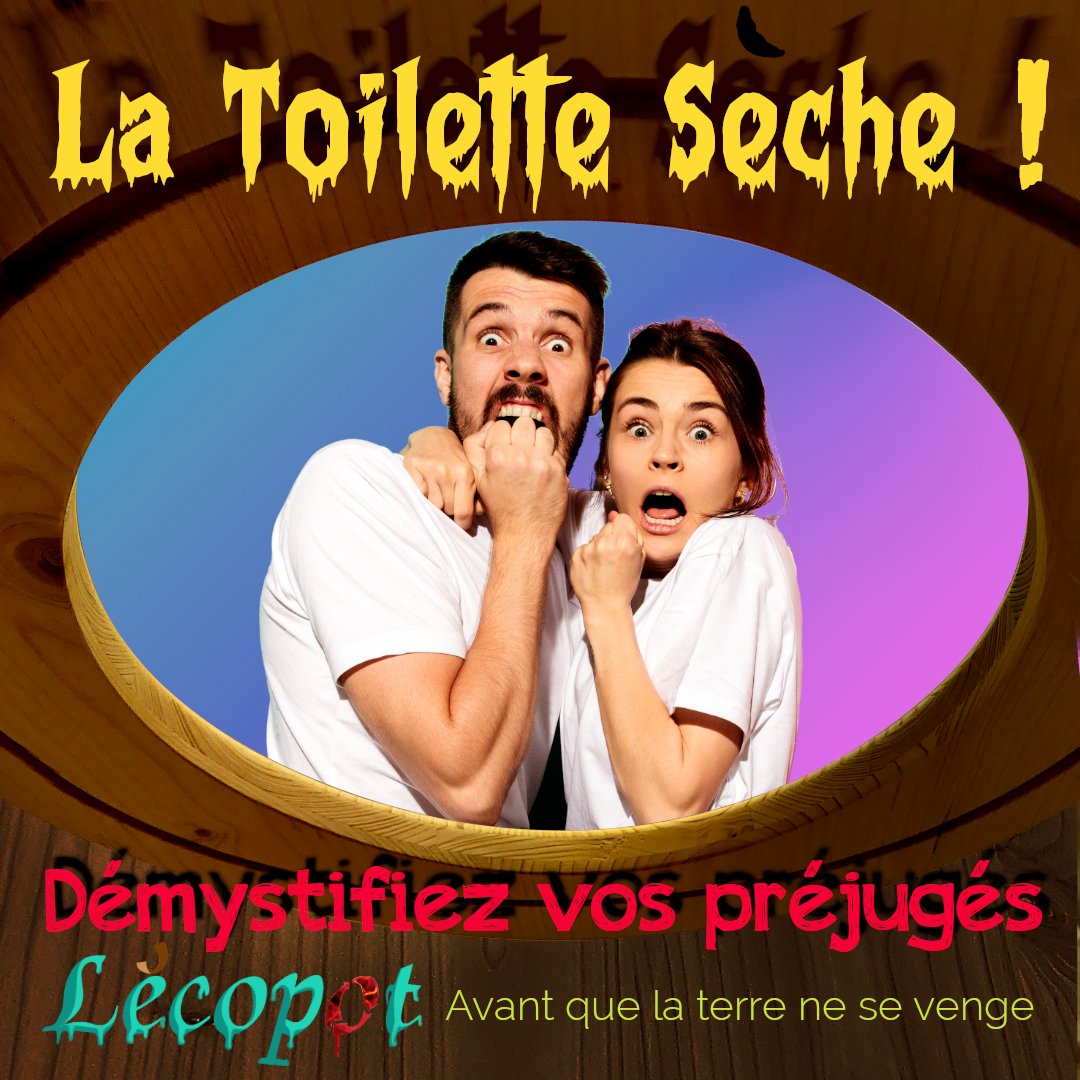Dry toilets have a lot of stereotypes.
Scary but completely unfounded preconceptions.

For the uninitiated, dry toilets can be intriguing, amusing or even frightening.
Here are some irrational fears and misconceptions about dry toilets:
1. Dry toilets stink: FALSE
No, dry toilets don’t smell! In this respect, they’re like water closets: if done right, there’s no smell. Simply place 4-5 cm of shavings at the bottom of the bucket before use and cover your needs thoroughly. Covering with shavings will mask odors. If, in spite of everything, an olfactory discomfort appears, it’s because there aren’t enough shavings in the bucket, or because the start of decomposition needs a boost from the
Microorganisms
.
2. It’s disgusting : FALSE
Like the water closet, you’ll see the results of your little and big errands… and there’s nothing we can do about it. But once covered with shavings, everything is hidden, you can’t see anything and there’s no smell.
Traces on the bucket? It can happen, like in a water closet! But once you’ve emptied the bucket in the composter, just hose it down (the garden hose works just fine), apply a non-aggressive cleaner and brush if necessary, and off you go!
In addition
dry toilet compost
can be composted over 3 years, with 2 years for installation. It decomposes and undergoes a hygienization phase that kills pathogens by raising the temperature to up to 70°! After 2 years, the compost has become a fertile soil full of nutrients for your plants!
3. It’s complicated: FALSE
The operation is quite simple and requires no more handling than taking out the trash! Dry toilets are also easy to use. Cover everything and empty the bucket into the composter. Child’s play! What’s more, the toilet doesn’t need to be connected to electricity or plumbing. It can be placed anywhere.
4. Dry toilets are for hippies: FALSE
Nowadays, everyone is concerned about ecology, protecting our Earth and its resources.
Everyone can implement solutions at their own level. Dry toilets are easy to install, easy to use and an interesting solution for our environment.
5. It’s full of bacteria: TRUE but COOL!
There’s no more bacteria in a dry toilet than in a wet one. Just because the bowl is white and the water washes away the faeces doesn’t mean it’s clean… What’ s more, not all bacteria are bad. Our world and our bodies contain huge numbers of bacteria, and many of them are essential. Compost decomposes and matures using bacteria. They are the ones who will transform dry toilet waste into compost. They also eliminate drug residues and pathogens.
6. It will never be as good as waterborne sanitation: FAAAUUUUUX
Water purification, via wastewater treatment plants that clean the water through various filtering processes.
The large particles will be cleaned, but not the micro-particles and drug residues that remain in the water, which will return to the rivers… What’s more, water has no “decomposing” action.
Although there are few studies on the decomposition of dry toilet waste, we do have documentation on the composting process. The latter goes through a phase of decomposition and maturation as mentioned above.
Unlike water, compost acts on drug residues. It’s always a better solution than waterborne sanitation, which doesn’t provide any.
7. It’s a step backwards: FALSE
These toilets are nothing like the backyard toilets of our elders. Dry toilets with bio-controlled litter provide compost and potting soil. They enable us to reclaim our place in nature’s cycle and give back what we take from her. In short, dry toilets are the future!
Some sources:
– Eautarcie
Eautarcie
by J.Orszàgh
– The Little Fumain book by J.Jenkins
– Dry toilets and compost – L’Archi’Pelle video